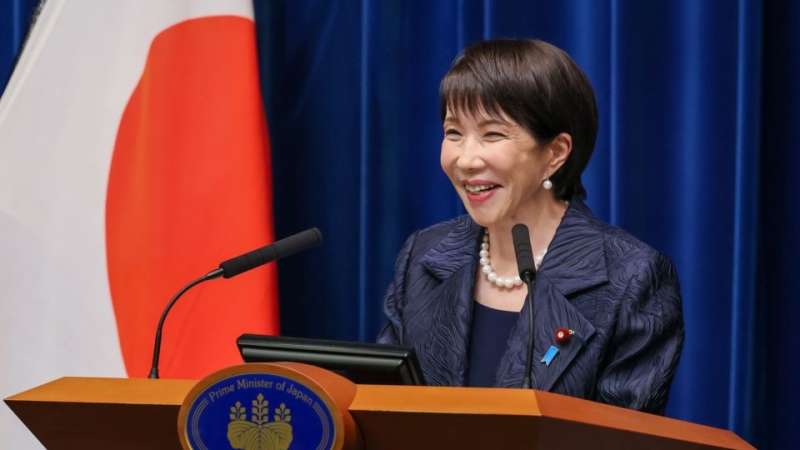By Yu Jhou (Jonathan) Chen (KAS Grade 11)
When Japanese Prime Minister Sanae Takaichi stood in the Diet last week and answered a question about Taiwan, she probably did not expect to set off one of the sharpest diplomatic clashes in months. Yet for Taiwan, and especially for young people watching regional politics, her comments reveal a shifting and important reality: Japan is becoming more vocal while China is revealing its true colors and growing more aggressive.
Whether we pay attention or not, all of this affects us directly.
What Takaichi Actually Said
During a parliamentary session, an opposition lawmaker asked Takaichi about Japan’s legal concept of a “survival-threatening situation.” This term comes from Japan’s 2015 security law, which allows the Self-Defense Forces to act militarily if Japan’s survival is at stake. Takaichi gave a hypothetical example:
If China attempted to seize Taiwan using battleships or military force, that could qualify as a survival-threatening situation for Japan. She added that if U.S. ships were attacked while breaking a potential Chinese blockade, Japan might be required to intervene to defend both itself and its ally.
Taiwan is only 110 km from Japan’s nearest territory, and Japan depends on the waters around Taiwan for shipping lanes, energy imports, and trade. Japan also hosts the largest U.S. military presence in the world outside America.
Why do these comments matter? Japan’s 2015 security reform was controversial because it expanded what Japan’s Self-Defense Forces could do after decades of pacifist policy. At the time, thousands protested nationwide. Now, nearly ten years later, Japan has a leader finally willing to apply that law directly to Taiwan.
Takaichi is a known nationalist, unafraid to take strong positions, and even publicized her meeting with a Taiwanese representative at a regional summit in Seoul, something previous Japanese prime ministers avoided to prevent angering Beijing.
China’s Response
Beijing reacted as expected: intensely and aggressively. China’s Consul General in Osaka, Xue Jian, reposted a news article on X about Takaichi’s remarks and wrote:
“The dirty head that sticks itself in must be cut off.”
The post was deleted, but not before it went viral and set off outrage in Japan.
Tokyo officially condemned the comments as “extremely inappropriate.” China then filed its own protest, accusing Japan of violating the spirit of the 1972 agreement in which Japan recognized the PRC and acknowledged Beijing’s position on Taiwan.
At the same time, Japan’s Chief Cabinet Secretary Minoru Kihara reaffirmed Japan’s commitment to the agreement but emphasized that Taiwan issues must be resolved peacefully.
Japan’s Position
Japan’s reaction to the recent diplomatic clash makes sense and is not emotional or provocative. It is grounded in strategic reality. For years, China has steadily expanded its military presence in the region, sending drones near Japan’s airspace, increasing naval patrols around the Senkaku Islands, and escalating pressure on Taiwan with unprecedented military exercises. These moves have eroded trust and heightened the sense that Beijing is willing to revise the regional order and take what it wants by force.
Japan’s response is also shaped by geography as much as policy. Taiwan sits only 100 kilometers from Japanese territory, and the trade routes around it are among the world’s most important. Nearly all of Japan’s energy imports pass through these waters. A conflict in the Taiwan Strait would therefore not be a distant crisis but a direct threat to Japan’s economy and security.
Why Should Taiwanese Care?
For Taiwan, Japanese willingness to speak openly about the threat of Chinese aggression is significant because most major powers maintain vague and deliberately ambiguous positions on Taiwan. It should be noted that:
- Japan is one of the few to publicly outline why the island’s security matters.
- Japan is one of Taiwan’s closest partners: From vaccines to semiconductor cooperation, Japan has consistently supported Taiwan despite diplomatic constraints.
- Japan’s military posture is rapidly evolving: With record-high defense spending, Japan is positioning itself as a central actor in Indo-Pacific security.
- Public opinion in Japan is shifting: A recent Kyodo News poll showed that nearly half of Japanese citizens support a military response if China attacks Taiwan, something unimaginable a decade ago.
In an increasingly tense Asia, Taiwan remains the fulcrum of regional stability. Japan’s latest statements highlight this reality and suggest that in the geopolitical contest surrounding Taiwan, silence is no longer an option.
The opinions expressed in this article are the author’s alone and may not reflect the views of this media organization or its management.



